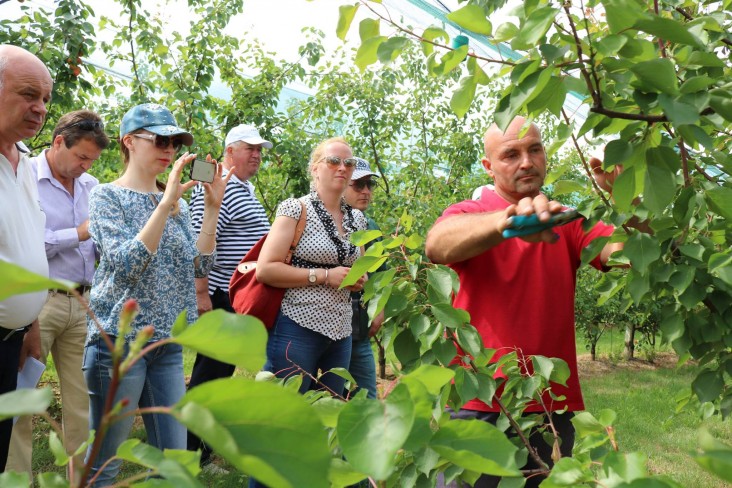Speeches Shim
USAID’s High Value Agriculture Activity in Moldova (HVAA) works to cultivate a modern agriculture sector that increases rural prosperity, thereby improving the economic well-being of all Moldovans. In collaboration with agribusinesses, farmers, water user associations, and others, the project helps maximize the profitability of each hectare by improving the quality and quantity of production, increasing sales through local and international markets, and fostering partnerships throughout the ag sector to achieve shared goals.
In its first year, the project supports the apple, table grapes, stone fruits, honey, and greenhouse-grown and open-field vegetables sectors. In later years, the project may support other sectors that have the potential to compete in domestic and international markets, foster economic growth, and create employment opportunities. To accelerate the adoption of new techniques and technologies, the project has established the Agriculture Innovation and Technology Transfer Fund. This fund will to encourage investments in high-value agriculture by providing grants to farmers, processors, input suppliers, and others to address productivity and competitiveness constraints, generate higher added value, and to grow and compete with agribusinesses and products imported from the EU.
Major areas of support
Expand presence on Domestic and international markets
HVAA works to increase the quality and quantity of Moldovan products on both the international and domestic markets. The project supports Moldovan producers to capture new EU market opportunities created through the Deep and Comprehensive Free Trade Agreement; to compete with imported products domestically; and to identify and enter new markets. Internationally, the project works with the Moldovan Investment and Export Promotion Organization and local associations to support Moldovan producers to promote their products through trade fairs and trade missions, to explore opportunities in new markets, and to increase access to and use of market information in targeted areas. Domestically, the project works with supermarkets to promote Moldovan products and with sector associations and producers to ensure a reliable supply of quality produce to retailers.
Improve productivity and compliance with international standards
Moldova's rich, fertile soils and the temperate climate give it an equal bio-climatic agricultural potential to Germany. HVAA helps Moldovan producers to capitalize on this potential by supporting modernization of the Moldovan HVA sector, taking advantage of the significant investments in irrigation and post-harvest infrastructure and emerging business linkages while introducing commercial, environmentally sustainable farming systems. This includes promoting modern planting, crop management, and harvest and post-harvest handling technologies, and supporting the adoption of EU and international food and safety standards required for export.
Support associations to strengthen services to members
Member-based groups — such as producer groups, water users associations, and industry associations — have important roles in agricultural value chains, including advocacy, coordination of shared resources, and marketing support. HVAA supports member-based groups through tailored capacity-building programs to improve the quality of services the organizations provide to their members.
Promote ag-friendly policies and build a skilled workforce
High-value agriculture producers require the latest technologies, sophisticated management techniques, and a skilled workforce to compete in today’s global market. To this end, HVAA works to forge stronger connections between research, education, and extension, while focusing on the needs of the private sector. HVAA facilitates the growth of a sustainable workforce development, test market agricultural innovations, and transfer of this new information to agricultural stakeholders through public-private partnerships and a $5.7 million Agriculture Innovation and Technology Transfer Fund. HVAA also builds the analytical and advocacy capacity of associations to take the lead in promoting policy reform based on regulatory impact and cost-benefit analysis.
Expected results
- $84 million sales in agricultural products in selected value chains
- 600 enterprises assisted in enhancing production capacities and the marketing and export of high value agricultural products
- 150 farmers presenting their products and companies at the specialized international agricultural exhibitions
- 280 agricultural entrepreneurs adopting advanced postharvest technologies
- 3,500 farmers applying new varieties and modern technologies of cultivation of agricultural products
- 5,000 farmers trained in advanced production and post-harvest technology


Comment
Make a general inquiry or suggest an improvement.